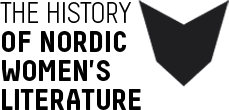“Gynaeceum” is Greek and means ‘women’s chamber’. In the Renaissance the word was used as a genre designation for a literary historical category: a catalogue of women who were notable by virtue of their writings or some other form of artistic or intellectual activity.The gynaecea typically had a systematic or alphabetic structure, making them suitable as reference works. By looking up a famous woman’s name, the reader is introduced to her family via a few laudatory adjectives and her own intellectual achievements. The information is often kept brief.The Nordic region has an excellent collection of home-grown gynaecea. The genre is particularly well represented in Denmark. This small collection of Swedish biographies, and the quite numerous Danish and Norwegian biographies included in the Danish gynaecea, makes for a picture of active artistic and intellectual circles of women in these Nordic countries during the seventeenth and eighteenth centuries. And we can only presume that the same could be said of Iceland, the Faroe Islands and Finland. And that there were women in the Nordic region who considered themselves members of the European ‘club’ of cultured women.
Tag: Norway
By and large, what we can find out about Ingeborg Grytten, one of Norway’s two seventeenth-century poetesses, has to be gleaned from her hymns. We do not even know the year of her death. But we know that she was familiar with Dorothe Engelbretsdatter’s Siælens Sang Offer, because she borrowed material for her melodies from it.Thus the west coast of Norway produced the first two female Norwegian poets. They came from the same supernational clergy class that was, at the time, the custodian of writing – and of women’s writing too.
Dorothe Engelbretsdatter drove a wedge into patriarchal male society. She is known as the first female hymn writer in Denmark-Norway to assume a sermonising poetic voice representative of the genre. Her verse found its way into the oral and popular tradition, the realm of most women, as well as the ceremonious, male-dominated, and learned house of God. Depictions of the virtuous and the female were themes that linked low and high, the nursery and the church. Unlike her male poet colleagues, she had no other occupation than that of writing. She faced the God of the old ‘estate society’ not as bishop, officer, or schoolmaster, but as woman. She wrote between sixty and seventy hymns and prayers, mostly collected in Siælens Sang-Offer (1678; Song Offering of the Soul) and Taare-Offer (1685; Offering of Tears), a versified rendering of devotions. She ended up making her livelihood by writing, supplemented by a paltry widow’s pension. Dorothe Engelbretsdatter thus became an early example of the professional author who made her living through the pen. This was exceptional at the time.
The view taken by the Christian Church of women who wrote on holy matters, evangelised, preached, prophesised or in other ways acted as God’s mouthpiece has been inconstant: at times accepting, at times non-committal. Opinions have been determined by the Church’s need for messengers and by pressure exerted on the Church by various interest groups. We can identify four periods of relative latitude as regards these speaking and writing women. First, the period preceding the official establishment of an organised Church (c. second century AD); secondly, the expansion of the Church in Europe during the seventh to ninth centuries; thirdly, lay Pietism of the twelfth and thirteenth centuries; and fourthly, the seventeenth- and eighteenth-century Pietist movements in the wake of Reformation and Counter Reformation.
Christiane Birgitte Koren is best known for her diaries, written between 1808 and 1815 but not published until 1915, as: “Moer Korens” Dagbøger (Mother Koren’s Diaries). For the most part, the writer addresses herself to her closest family, but there are also texts addressed to friends and acquaintances in Denmark and Norway.Her diaries are an outlet for the expression of emotion and intellect. The mother’s role in the family involved being an agent of humanity and culture in the home, and within this parameter Koren could apply herself to theatre criticism, literary reviewing, the telling of folktales and anecdotes, and, not least, to passing on knowledge of human nature and her experience of life.Christiane Koren published three plays, Dramatiske Forsøg (Dramatic Attempts), in 1803. Her plays were not performed in her lifetime, nor has posterity shown them any interest.
Whereas Mary Wollstonecraft was a radical Romanticist in her writing as well as in her life, the Nordic female authors found it more difficult to rise above the prejudices of what was suitable for women. In Sweden at least, a patriarchal religiosity sanctioned a widespread oppression of women at all levels. To this must be added the male-chauvinist profile of the Romantic writers.The passive female ideal, propagated by Rousseau and dominant on the continent, was what the female English, French, and German authors tried to escape from by going into exile, both metaphorically and literally. In Scandinavia this way out was seldom used. The great Swedish exception is Fredrika Bremer.

